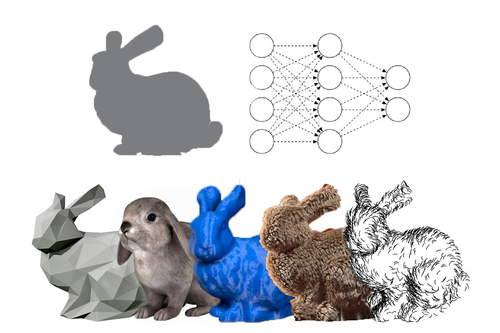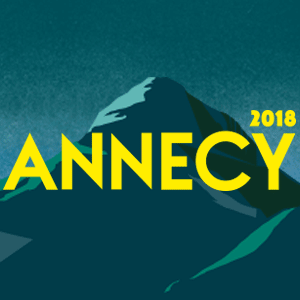-
 Full Conference Pass (FC)
Full Conference Pass (FC)
-
 Full Conference One-Day Pass (1D)
Full Conference One-Day Pass (1D)
Date: Tuesday, December 4th
Time: 2:15pm - 6:00pm
Venue: Hall D5 (5F, D Block)
Summary: In computer graphics, many traditional problems are now better handled by deep-learning based data-driven methods. In applications that operate on regular 2D domains, like image processing and computational photography, deep networks are state-of-the-art, beating dedicated hand-crafted methods by significant margins. More recently, other domains such as geometry processing, animation, video processing, and physical simulations have benefited from deep learning methods as well. The massive volume of research that has emerged in just a few years is often difficult to grasp for researchers new to this area. This tutorial gives an organized overview of core theory, practice, and graphics-related applications of deep learning.
Author(s)/Speaker(s):
Moderator: Niloy Mitra, University College London, United Kingdom
Lecturer(s): Niloy Mitra, University College London, United Kingdom
Iasonas Kokkinos, University College London, Facebook AI Research, United Kingdom
Paul Guerrero, University College London, United Kingdom
Nils Thuerey, Technical University of Munich, Germany
Tobias Ritschel, University College London, United Kingdom
Author(s)/Speaker(s) Bio:
Niloy J. Mitra leads the Smart Geometry Processing group in the Department of Computer Science at University College London. He received his PhD degree from Stanford University. His research interests include shape analysis, geometry processing, and computational design and fabrication. Niloy received the ACM Siggraph Significant New Researcher Award in 2013 and the BCS Roger Needham award in 2015. His work has twice been selected and featured as research highlights in the Communication of ACM, received best paper award at ACM Symposium on Geometry Processing 2014, best software SGP 2017, and Honourable Mention at Eurographics 2014.
Niloy J. Mitra leads the Smart Geometry Processing group in the Department of Computer Science at University College London. He received his PhD degree from Stanford University. His research interests include shape analysis, geometry processing, and computational design and fabrication. Niloy received the ACM Siggraph Significant New Researcher Award in 2013 and the BCS Roger Needham award in 2015. His work has twice been selected and featured as research highlights in the Communication of ACM, received best paper award at ACM Symposium on Geometry Processing 2014, best software SGP 2017, and Honourable Mention at Eurographics 2014.
Iasonas Kokkinos obtained the Diploma of Engineering in 2001 and the Ph.D. Degree in 2006 from the School of Electrical and Computer Engineering of the National Technical University of Athens in Greece, and the Habilitation Degree in 2013 from Université Paris-Est.
He is currently a faculty at UCLand Facebook AI Research (FAIR). His research activity is currently focused on deep learning for computer vision. He has been awarded a young researcher grant by the French National Research Agency, has served as associate editor, and serves regularly as a reviewer and area chair for all major computer vision conferences and journals.
Paul Guerrero is a Post-Doc at University College London, working on shape analysis and image editing, combining methods from machine learning, optimization, and computational geometry. He received his PhD in computer science from Vienna University of Technology. Paul has published several research papers in high-quality journals, is a regular reviewer fo conferences and journals, and a conference IPC member.
Nils Thuerey is an Associate-Professor at the Technical University of Munich (TUM). He works in the field of computer graphics, with a particular emphasis on physics simulations and deep learning algorithms. After studying computer science, Nils Thuerey acquired a PhD on liquid simulations in 2006 (both at the University of Erlangen-Nuremberg). Until 2010 he held a position as a post-doctoral researcher at ETH Zurich. He received a tech-Oscar from the AMPAS in 2013 for his research on controllable smoke effects. Subsequently, he worked for three years as R&D lead at ScanlineVFX, before he started at TUM in October 2013.
Tobias Ritschel is a Senior Lecturer at University College London. Previously he was a junior research group leader at the Max Planck Center for Visual Computing and Communication at Max Planck Institut Informatik. His interests include interactive and non-photorealistic rendering, human perception, and data-driven graphics. Ritschel received a PhD in computer graphics from Max Planck Institut Informatik. In 2011, he received the Eurographics PhD dissertation award and the Eurographics Young Researcher Award in 2014.




